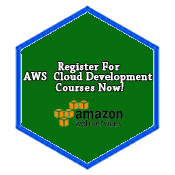
Course Version: This course outline applies to version 1.1 of AWS Academy Cloud Architecting in English.
Description: AWS Academy Cloud Architecting covers the fundamentals of building IT infrastructure on AWS. The course is designed to teach solutions architects how to optimize their use of the AWS Cloud by understanding AWS services and how they fit into cloud-based solutions. Although architectural solutions can differ depending on the industry, type of application, and size of the business, this course emphasizes best practices for the AWS Cloud that apply to all of them. It also recommends various design patterns to help you think through the process of architecting optimal IT solutions on AWS.
Curriculum Objectives
Upon completion of this course, students will be able to:
- Describe how cloud adoption transforms the way IT systems work
- Describe the benefits of cloud computing with Amazon Web Services
- Discuss how to design systems that are secure, reliable, high-performing, and cost efficient
- Describe principles to consider when migrating or designing new applications for the cloud
- Identify the design patterns and architectural options applied in a variety of use cases
- Define high availability, fault tolerance, and scalability
- Discuss how to avoid single points of failure
- List AWS services that have built-in fault tolerance or can be designed for fault tolerance
- Describe why load balancing is a key architectural component for AWS-powered applications
- Identify the benefits of Infrastructure as Code
- Describe how to leverage the capabilities of AWS to support automation
- Create, manage, provision, and update related resources using AWS CloudFormation
- Articulate the importance of making systems highly cohesive and loosely coupled
- Describe system coupling to support the distributed nature of applications built for the cloud
- Describe database services for storing and deploying web-accessible applications
- Compare structured query language (SQL) databases with NoSQL databases
- Describe how the AWS Well-Architected Framework improves cloud-based architectures
- Describe the business impact of design decisions
- Identify the design principles and best practices of the Operational Excellence pillar
- Describe how to secure data at every layer in the application
- Describe the appropriate tools and services to provide security-focused content
- Describe the design principles and best practices of the Reliability pillar.
- Select compute, storage, database, and networking resources to improve performance
- Evaluate the most important performance metrics for your applications
- Follow best practices to eliminate unneeded costs or suboptimal resources
- Troubleshoot common errors
Enroll
Learn More
Click the following picture to view a video about the AWS Cloud Architect course.


